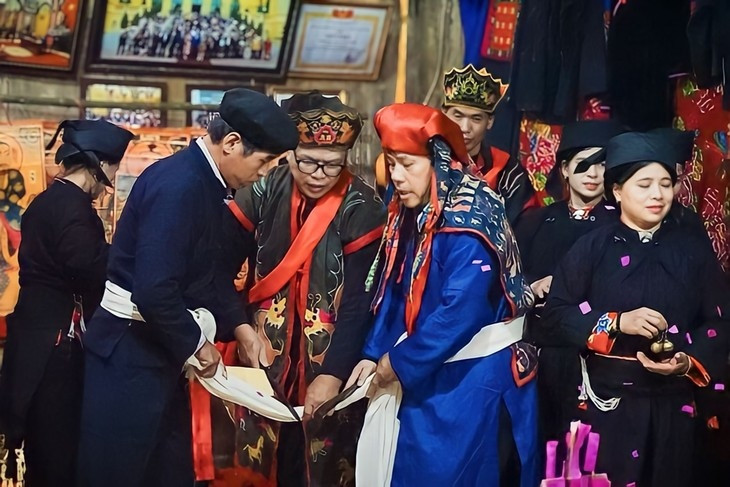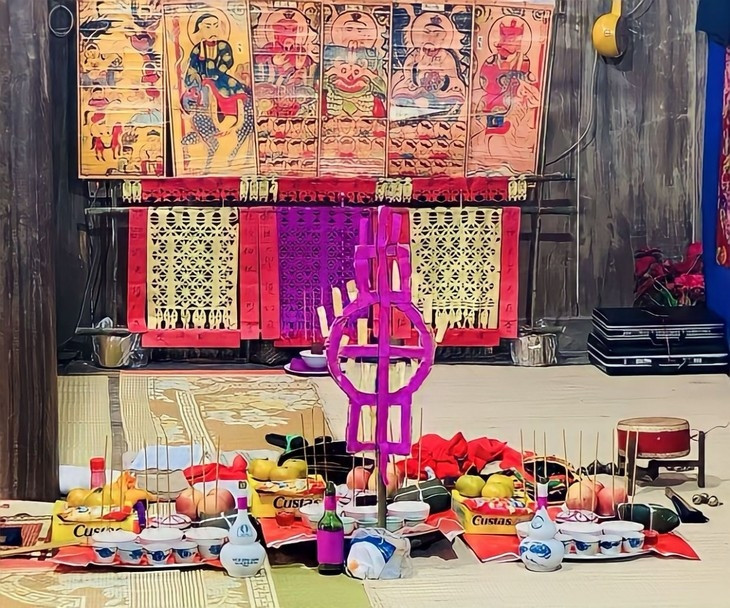

The ritual has been practiced and promoted by generations of the Nung in Na Ri district, Bac Kan province.
Spring is the time to pray for peace, happiness, and prosperity for all family members. When pink peach flowers and white plum flowers blossom in the forest, it’s time for the Nung in Bac Kan to prepare the Longevity ritual for the elders in their family.
Artisan Nong Van Ho of Thom Chan hamlet, Xuan Duong commune, who has performed many Longevity ceremonies, says the children choose a good day in spring to organize the Longevity ceremony for their parents.
“Children organize a Longevity ceremony for each parent who is 70 years old or older. The main ceremony is held on one’s birthday. They also organize a Longevity ceremony during the New Year holiday when all the children are gathered at home. They combine it with a ceremony to relieve everybody of their bad luck in the New Year,” said Ho.
The ceremonial offering for the Longevity ritual includes 4 bowls of rice, 5 tea-cups, cakes, 4 roosters, and 2 hens. When performing the ceremony, they prepare 3 roosters and 2 hens, keeping 1 rooster alive for the shaman to perform a ritual.
The offering must include 2 Moỏc cakes, a pounded sticky rice cake 15 to 20 cm in diameter to cover the mouth of a bamboo basket, which contains a boiled egg and 10 small sticky rice cakes made by the daughter.

Nong Van Cuong of Na Dam hamlet recently held a Longevity ceremony for his 80-year-old mother. He said the ceremony can begin at any time and often lasts 4 to 5 hours. He held the ceremony in the morning, which was more convenient for his family members.
“My mother turned 80 years old. The local government organized a celebration of her longevity, and according to the Nung custom, her family also held a Longevity ceremony for her. In the old day, the Longevity ceremony was often held at night, but now we hold it during the day,” Cuong said.
The shaman performs the Longevity ceremony in two steps. The first step consists of 3 specific activities to pave the road to the Land Genie, the Village Tutelary, and the ancestral altar. The second step is relieving bad luck. For every activity, the shaman sings his prayers.
Artisan Nong Van Ho said, “Today is a good day. The children are holding a Longevity ceremony for their parents to extend their destiny and wish them good health to live to a great age happily with their children.”
After a ceremony to pray for safety and health and relieve everyone of their bad luck, the shaman performs one final ritual to clean the house of bad luck.
The Longevity ritual is a tradition that demonstrates humanity, morality, and remembering the source of the water we drink. By celebrating the birthdays of the elderly, children show their filial piety and gratitude to their parents for raising them.
VOV